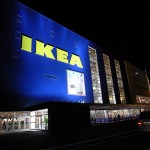 After last week’s blog entry, I got a bit curious about IKEA and went looking for further information. In particular, I wanted to see how good they are at storytelling.
After last week’s blog entry, I got a bit curious about IKEA and went looking for further information. In particular, I wanted to see how good they are at storytelling.
Much of the information I found is from sweden.se, the gateway site to Sweden. According to this site, IKEA’s catalog has become something of a style Bible for people all over the world. And, the Bible analogy is perhaps a good one. In 2008, the catalog had a print run of 175 million copies, in 27 languages and 35 countries, giving it the highest circulation of any publication worldwide—surpassing the Bible.
The British design magazine Icon has called IKEA “the most influential force in contemporary design”. IKEA’s following is fanatical, and in many ways religious. By some estimates, twice as many people in the UK visit an IKEA store on Sunday as attend church. Approximately 10 percent of Europeans are believed to have been conceived in an IKEA bed.
As someone who spends a good deal of time coaching companies and individuals about how to tell their authentic stories of identity, I see vast untapped potential when I consider the IKEA phenomenon. Think about it: a vast and extremely devoted clientele, in fact a cult-like following, a powerful and authentic “founder and origin” story that the company seems to embody, and a group of employees committed to a cause. What more could an organization ask for?
My goal in writing this piece is not to criticize IKEA, a company that I like and admire in many respects. However, I am frustrated when I visit the website and Facebook pages of this remarkable group. I see no “hero” stories, either from employees or customers. For example, there must be tales of workers who, in their relentless pursuit of increased functionality, more reliability, and lower costs, make some of the remarkable discoveries in design that lead to lower prices for consumers. I would like to know of those people, to hear of how they find meaning in their work, and to see how they innovate.
And, where are the stories from clients about the creative ways they use IKEA products, or about the savings they achieved by shopping there? These would also be interesting to see.
Forward-thinking companies today are learning to use the tools of the Internet to build and strengthen their communities, to give a shared identity to all the stakeholders of the brand. One of the most effective ways to bind such a community together is to share their stories, in particular user and employee stories that tell tales of passion, of exploits, and of finding meaning.
If I were advising IKEA, I would encourage them to uncover and tell the stories of their “heroes”. The tools of e-marketing, and in particular social media, allow organizations to let their employees and customers feel like heroes, by giving them a platform to express their passion to the world. Let your customers and employees tell the world who you are and what you stand for!
In the case of IKEA, and other companies with passionate followers, this remains a mostly untapped opportunity.
